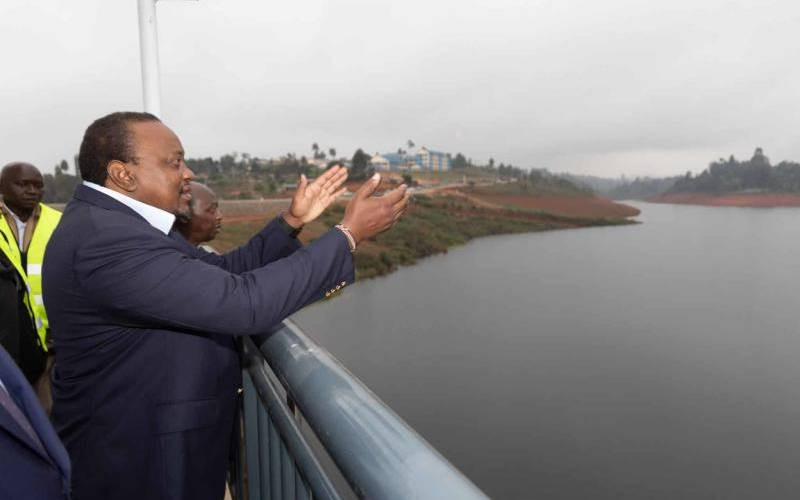President Uhuru Kenyatta is keen to trim electricity tariffs by over 40 per cent by the end of December. This is part of a raft of measures designed to lower cost of doing business and attract investments.
Kenya has been losing out on investment opportunities as investors seek destinations with cheaper sources of energy.
“In this regard, my Government has developed several initiatives including the 40-month programme to inject over 5,000MW of electricity into the National Grid, to reduce the cost of power by over 40 per cent by end of this calendar year, fast track the Standard Gauge Railway (SGR) project and the 10,000km road infrastructure through an innovative financing mode.”
The president said among the goals of his administration is to position Kenya as the continent’s manufacturing and technology hub.
“We want to be among the first movers in Africa by creating an enabling environment to attract investment,” he said while branding Kenya as the preferred gateway to Africa for foreign investors.
He was addressing a gathering of domestic and international exhibitors that had converged in Nairobi to showcase their cotton, textile and apparel products on Monday evening.
“We are at a point in history when the tide is changing, positioning Africa for a major economic take-off through industrialisation,” he said, adding that Africa was increasingly becoming an attractive investment destination driven by expanding middle income population, improved economic management; discovery of extractive resources and a relatively young energetic workforce that can enable the continent reap its demographic dividends.
During the event, US ambassador to Kenya Robert Godec announced a new Sh5.78 billion ($65 million) funding to promote trade and investment in East Africa, as part of President Obama’s Trade Africa initiative.
Awareness campaign
The agency says it would build awareness around opportunities for African and US firms to increase trade, expand business partnerships, and invest in East Africa.
To boost Africa’s exports, the US Government offers a unique trade preference programme called the African Growth and Opportunity Act (AGOA), which promotes trade competitiveness, job growth, and poverty reduction.
Nearly 6,400 qualifying items can be exported to the US without import duties Under the AGOA pact. So far,
USAID has facilitated over Sh17.8 billion ($200 million) in exports from East Africa to the US market under AGOA preferential trade pact.
Kenyatta noted that though Africa has benefited from unprecedented growth over the last decade, a large part of its population still remained trapped in economic poverty, unemployment and inequality.
He pointed out that Africans still depend on agriculture for their livelihoods, and thus enhancing its performance is central to sustainable poverty reduction.
“Beyond increased agricultural income, effects on the wider economy of a more prosperous agricultural sector include strengthened linkages and greater demand for industrial products,” he said.
He said the cotton, textile and apparel sectors are labour-intensive and therefore key in addressing the unemployment and inequality challenges among the country’s youth.
He, however, reckoned that Africa’s trade is constrained by low export diversification and heightened dependence on primary products.
“This is the reason Africa’s commodity and investment-driven expansion has not created the necessary jobs to meet its growing young population. This growth path has left the continent vulnerable to external commodity prices shocks and internal weaknesses,” he said.
Stay informed. Subscribe to our newsletter
 The Standard Group Plc is a
multi-media organization with investments in media platforms spanning newspaper
print operations, television, radio broadcasting, digital and online services. The
Standard Group is recognized as a leading multi-media house in Kenya with a key
influence in matters of national and international interest.
The Standard Group Plc is a
multi-media organization with investments in media platforms spanning newspaper
print operations, television, radio broadcasting, digital and online services. The
Standard Group is recognized as a leading multi-media house in Kenya with a key
influence in matters of national and international interest.
 The Standard Group Plc is a
multi-media organization with investments in media platforms spanning newspaper
print operations, television, radio broadcasting, digital and online services. The
Standard Group is recognized as a leading multi-media house in Kenya with a key
influence in matters of national and international interest.
The Standard Group Plc is a
multi-media organization with investments in media platforms spanning newspaper
print operations, television, radio broadcasting, digital and online services. The
Standard Group is recognized as a leading multi-media house in Kenya with a key
influence in matters of national and international interest.








